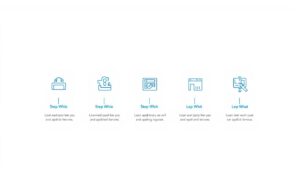Have you ever wondered how U.S. Bank tailors mortgage loans to suit your individual financial situation and long-term goals? When it comes to making the dream of homeownership a reality, personalized solutions are essential. U.S. Bank offers a comprehensive range of home purchase loans designed to meet the diverse needs of homebuyers. By combining mortgage credit expertise with innovative real estate financing tools, U.S. Bank ensures a seamless and informed homebuying experience.
As a reputable financial institution, U.S. Bank stands out for its commitment to responsible lending and customer education. Whether you are a first-time homebuyer or an experienced homeowner, U.S. Bank offers mortgage loans tailored to your unique financial profile. With a streamlined application process, the bank provides same-day loan approval in many cases, allowing you to move forward with your home purchase quickly and confidently. Find out more about how to ensure quick and easy loan approval. By leveraging advanced digital tools and expert guidance, U.S. Bank ensures a smooth and efficient financing experience from start to finish.
As the article progresses, it will be discussed in detail on how to obtain better rates with the help of online tools.
Understanding Mortgage Loans and Their Types
When navigating the world of mortgage loans, it’s crucial to understand the different types available to find the one that best fits your financial situation and homeownership goals. Here’s a closer look at the most common mortgage loan options:
Fixed-Rate Mortgages: Stability for Homebuyers
Fixed-rate mortgages offer homebuyers the security of a constant interest rate and monthly payment for the life of the loan. This type of mortgage is optimal for those who plan to stay in their home for a long time, as it provides predictability and financial stability. With a fixed-rate mortgage, homeowners can budget their finances more effectively, knowing that their mortgage payments will remain unchanged.
Adjustable-Rate Mortgages: The Flexible Option
Adjustable-rate mortgages (ARMs) provide an initial lower interest rate compared to fixed-rate mortgages. However, the interest rate adjusts over time based on market conditions. ARMs are ideal for borrowers who anticipate an increase in future earnings or plan to move or refinance within a few years. This flexibility allows homeowners to potentially save money in the early years of the mortgage loan.
FHA Loans: Supporting First-Time Buyers
FHA loans are government-insured mortgage loans, offering lower down payments and more lenient credit requirements. These loans are particularly beneficial for first-time buyers and those with lower credit scores, providing a more accessible path to homeownership. By offering FHA loans, U.S. Bank supports a broader range of homebuyers, helping them achieve their dream of owning a home.
See more content that may be relevant:
- Understanding Home Loans in the USA: Fixed vs. Variable Rates
- How Does the US Mortgage Market Work?
- Optimize Finances with Our Loan Calculator
Why Choose U.S. Bank for Your Mortgage Loan?
When considering mortgage options, U.S. Bank stands out due to its commitment to providing personalized mortgage services. With a focus on understanding each client’s unique financial situation, U.S. Bank ensures that homebuyers receive tailored mortgage solutions that best suit their needs.
Personalized Services Tailored to Your Needs
U.S. Bank excels in offering personalized mortgage services that cater to individual financial situations. Their experienced mortgage lender team works closely with clients to match them with the most suitable mortgage products. This personalized approach helps ensure that each homebuyer is paired with a mortgage that aligns with their financial goals and purchasing power.
Competitive Interest Rates and Terms
One of the key benefits of choosing U.S. Bank is the access to competitive interest rates and favorable loan terms. By offering rates that keep payments manageable, U.S. Bank adds value and affordability to the homebuying process. This institution’s rates are structured to provide long-term savings, making homeownership an achievable dream for many. Find out more about how to get low interest rates at great companies.
Trustworthiness and Industry Experience
With a track record of decades in the industry, U.S. Bank has established itself as an experienced mortgage lender. The bank upholds rigorous standards for ethical lending practices, continually earning high customer satisfaction ratings. This trustworthiness, combined with their deep industry experience, makes U.S. Bank a reliable choice for prospective homeowners.
The Mortgage Application Process Explained
The journey to homeownership starts with understanding the mortgage application process. At U.S. Bank, potential homebuyers are guided through each step, from mortgage pre-approval to documentation for mortgage and final submission. See more on how to apply for a mortgage loan: U.S Bank.
Pre-Qualification: Get Started with Confidence
Mortgage pre-approval at U.S. Bank provides potential homebuyers with an estimate of how much they may be able to borrow. This process instills confidence as buyers shop for their dream home. By assessing their financial situation and creditworthiness, U.S. Bank helps applicants gauge their borrowing capacity accurately.
Documentation Needed for a Smooth Application
Applying for a mortgage requires comprehensive documentation for mortgage. U.S. Bank guides applicants through collecting and submitting essential documents, such as proof of income, assets, employment, and credit history. This ensures a smooth and efficient mortgage application process, minimizing potential delays.
Steps After Your Application Submission
Once the mortgage application is submitted, U.S. Bank ensures applicants are well-informed about the subsequent steps. This includes the review process, appraisal, and the ultimate decision on loan approval. Clear communication from U.S. Bank fosters a transparent experience, keeping applicants updated every step of the way.
Factors Influencing Your Mortgage Loan Approval
Securing a mortgage loan approval encompasses various significant elements. U.S. Bank, renowned for its customer-centric approach and industry expertise, evaluates multiple criteria to ensure applicants’ eligibility and capability to repay the loan. Below, we delve into the critical factors that play a vital role in shaping your approval chances.
Credit Score: Understanding Its Importance
Your credit score serves as a pivotal determinant in the mortgage loan approval process. A higher credit score not only increases your chances of approval but also makes you eligible for more favorable interest rates and terms. Lenders like U.S. Bank assess your credit score to gauge the credit score impact on your loan application. It’s advisable to check your score regularly and take measures to improve it if necessary. Understand more how to improve your credit score efficiently.
Debt-to-Income Ratio: What You Need to Know
The debt-to-income ratio is another crucial factor considered by lenders. This ratio helps U.S. Bank evaluate your ability to manage monthly mortgage payments alongside your existing debts. A lower debt-to-income ratio indicates a healthier financial situation, thereby enhancing your mortgage loan approval probability. Knowing and managing this ratio effectively can significantly impact the overall loan application process.
Employment History and Stability
Consistent employment history and stability are vital indicators of reliable income and repayment capability. U.S. Bank examines your employment history to ensure you have a steady and stable source of income. A solid work history reassures lenders of your financial stability, making it easier for you to qualify for a mortgage loan. Therefore, maintaining stable employment plays an integral role in persuading lenders of your repayment reliability.
Down Payment Options for Homebuyers
When considering homeownership, exploring various down payment options is essential. U.S. Bank offers flexible solutions tailored to meet the diverse needs of prospective homebuyers. Whether you have the means to make a traditional down payment or require assistance, there are suitable avenues to ensure you achieve your dream of owning a home. Check how to guarantee greater flexibility in payment loans.
Traditional Down Payments vs. Low Down Payments
Traditional down payments typically require 20% of the home’s purchase price, which can lead to lower interest rates and avoid private mortgage insurance (PMI). However, for those unable to meet this substantial amount, low down payment options such as FHA loans allow buyers to put down as little as 3.5%, making homeownership more accessible.
Down Payment Assistance Programs Available
Recognizing the financial challenges many face, U.S. Bank provides down payment assistance programs. These programs are designed to support eligible homebuyers, including first-time buyers and low-income families, by offering financial aid that can significantly reduce the initial costs of purchasing a home. This assistance can make the dream of homeownership a reality for many individuals.
Benefits of Higher Down Payments
The benefits of higher down payments are numerous and can lead to substantial long-term savings. By putting down a larger amount, homebuyers can secure lower interest rates and reduce the requirement for PMI. This financial strategy not only lowers monthly mortgage payments but also decreases the total interest paid over the life of the loan, ultimately providing a more cost-effective pathway to homeownership.
Tips for First-Time Homebuyers
Embarking on the journey of homeownership for the first time can be both exciting and overwhelming. U.S. Bank offers valuable tips for first-time homebuyers to help them navigate this significant milestone with confidence.
Budgeting for Your New Home
Effective budgeting is crucial when planning to purchase a home. Start by assessing your current financial situation and determining how much you can afford to spend on a property. Consider all aspects, including your monthly mortgage payments, property taxes, insurance, and maintenance costs. Accurate budgeting for home purchase ensures that you can sustain your investment without financial strain.
Understanding Closing Costs and Fees
Closing costs and fees can catch first-time homebuyers off guard. It’s essential to understand what these costs entail and budget for them accordingly. Common closing costs include loan origination fees, title insurance, and pre-paid expenses such as property taxes and homeowner’s insurance. Being aware of these additional expenses ensures there are no surprises at the final stages of home buying.
Finding the Right Real Estate Agent
Selecting a knowledgeable and trustworthy real estate agent is paramount when purchasing a home. A good agent can help you navigate the complexities of the market, negotiate prices, and find properties that fit your preferences and budget. Consider their experience, client reviews, and knowledge of the local market when making a real estate agent selection. Partnering with the right professional can make a significant difference in the homebuying process.
- Assess Financial Situation: Determine affordability by considering all costs.
- Research Closing Costs: Understand and budget for all associated fees.
- Select a Real Estate Agent: Choose an experienced professional to guide you.
By following these tips, first-time homebuyers can prepare themselves for a smoother and more informed homebuying experience.
Refinancing Your Mortgage: When and Why?
Refinancing your mortgage can be an astute financial move, but understanding the precise timing and benefits is crucial. U.S. Bank equips homeowners with the knowledge to make informed decisions on refinancing loans based on current interest rates, home equity, and personal financial goals. Explore more about the best times to refinance your mortgage loan.
Evaluating the Right Time to Refinance
Determining when to refinance is essential for maximizing mortgage refinancing benefits. Key factors include:
- Interest Rate Changes: Refinancing loans when interest rates drop can lead to substantial savings over the life of the loan.
- Home Equity: Building significant equity in your home can offer better refinancing terms and options.
- Financial Objectives: Aligning your refinancing strategy with short- and long-term financial goals ensures optimal outcomes.
Potential Savings and Benefits of Refinancing
Refinancing offers a range of benefits that can enhance your financial situation:
- Lower Monthly Payments: A new loan with a lower interest rate can reduce your monthly mortgage payments, easing your budget.
- Shorter Loan Terms: Opting for a shorter loan term can save thousands in interest and help you build equity faster.
- Cash-Out Refinancing: Accessing home equity through cash-out refinancing allows you to fund major purchases or consolidate high-interest debt.
Refinancing your mortgage with U.S. Bank can help you achieve significant savings and financial flexibility. Understanding when to refinance and leveraging the mortgage refinancing benefits at the right time will ensure you make the most out of your financial decisions.
Find out more about how to get better rates on loans with ideal tools:




